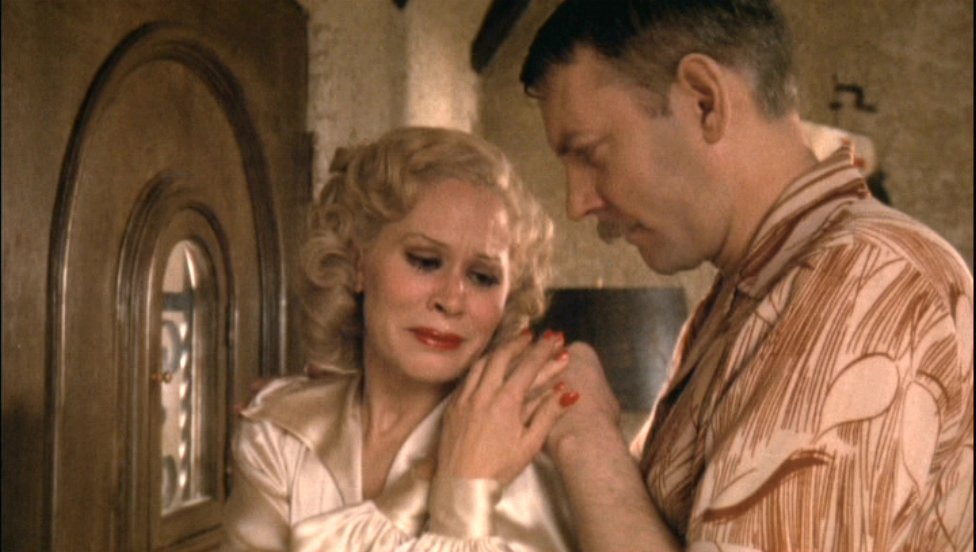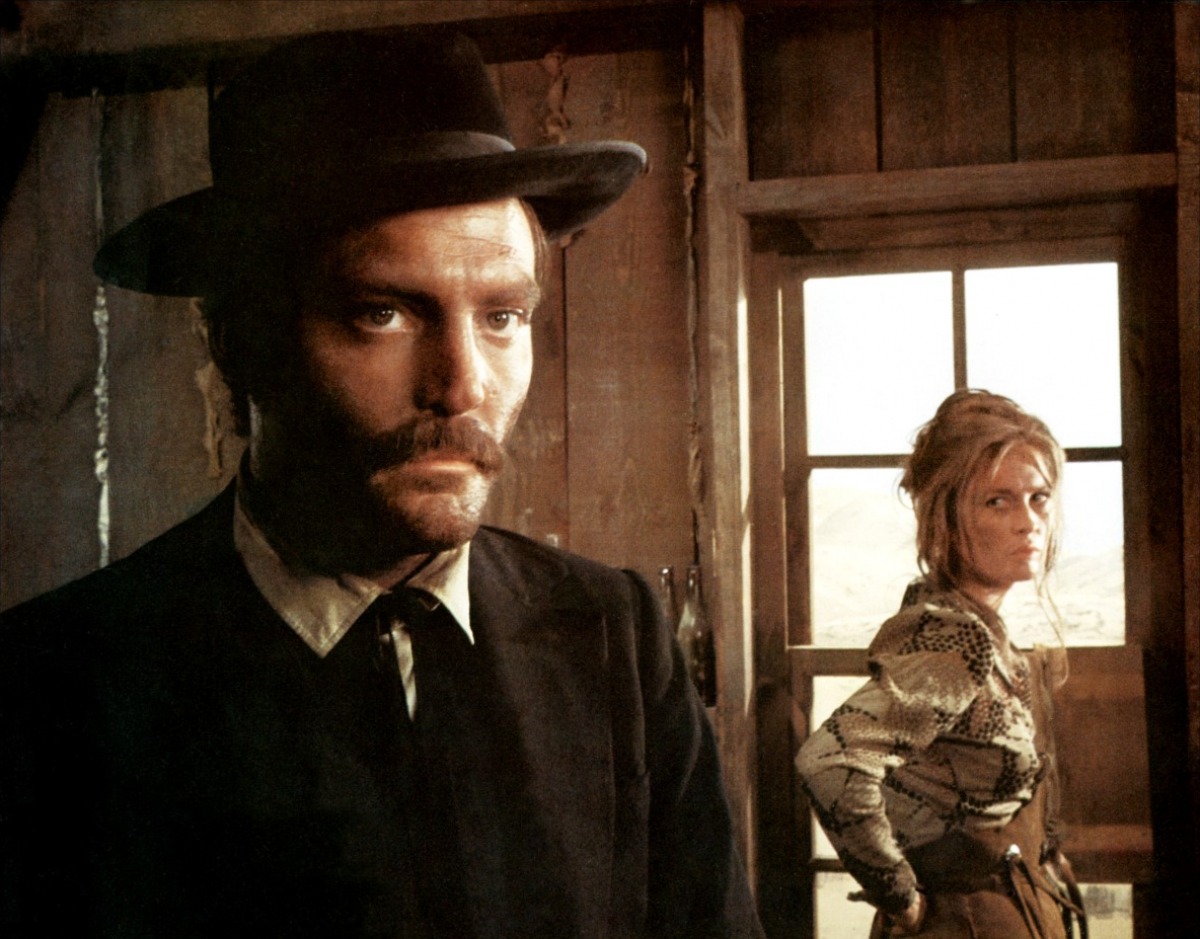
Though we all know America wasn’t the only country putting out solid cinema through the the 1970s, one cannot deny that Hollywood was going through a new golden period. Independent features and major studio films alike were garnering critical acclaim while also getting bums on to cinema seats, in what was arguably the richest and most revolutionary period in film history. This was the era of New Hollywood, when the young mavericks were given free reign over the Hollywood studios, thrown stacks of cash to realise their cinematic dreams. Some were hits, others were not so successful, but even many of the so-called flops were at the very least interesting. The lunatics had briefly taken over the asylum, and the results were extraordinary.
The 1970s were crammed full of outrageously good movies, more than I could ever put into a hundred lists. Below, then, are ten choice cuts which may have gone under your film-viewing radar…
1. Who is Harry Kellerman and Why is He Saying Those Terrible Things About Me? (1971)

One of the now lesser known films from Dustin Hoffman’s golden period is the curious Who is Harry Kellerman and Why Is He Saying Those Terrible Things About Me?, in which he plays rock composer Georgie Soloway, looking for the man of the title who’s been spreading lies about him. (To not spoil it for first time viewers, Kellerman’s true identity is very surprising.) The film follows Soloway’s life in the passing of one day, delving into his psychological troubles, his tormented past and his weirdest fantasies.
Then at the height of his stardom, Dustin was attracted to the part because it was a deep character he could really get to grips with, and as it was a small, lowish budget film, he was destined to be at the very centre of it. It was also a drastically different character to what viewers had seen him play before, at least on the screen. Only four years earlier he’d embodied post-teen, pre-adulthood frustration in The Graduate, and played the ultimate outsider in Midnight Cowboy. And here he was, playing an even more complex part, a man who wrote love songs for a living but had never had a meaningful relationship of his own.
It may have been a good opportunity for Hoffman the actor (it was rather like one of the stage roles he’d played in the mid sixties), yet commercially speaking it was suicide after the smash hits that came before it. But Hoffman was not commercially minded, thankfully, and he took roles for their artistic worth, not the pay cheque attached to them.
Ulu Grosbard, who would work with Dustin again at the end of the 1970s, directs this free flowing, experimental and often daring film with just the kind of showiness it needs. The savage critical mauling it received at the time was hardly valid, for it’s certainly an entertaining and ambitious effort that deserves applauding for what it aims at more than damning for what it is.
2. Day of the Locust (1975)

Based on Nathaniel West’s book, the film is set in pre-war Hollywood, following newly graduated Tod Hackett’s arrival in tinsel-town to work as a painter for a movie studio. Moving into an apartment block, he meets various characters, such as aspiring movie star Faye (Karen Black), and shy accountant Homer Simpson (really), played with beautiful understatement by Donald Sutherland.
A savage satire on Hollywood, the film veers towards the nightmarish at times, with touches of visual horror, and is unflinching in its criticisms of the Hollywood machine. Though certain Hollywood insiders might judge the film for its harshness, and in the way it presents Hollywood as a corrupt place that wrecks hopes and dreams, they might also see more than a touch of reality within its multi-faceted, often disturbing take on the land that promises riches and fame, but often delivers the exact opposite.
What deepens the blow of course is the fact it’s shot by one of Hollywood’s great outsiders, John Schlesinger, who made some of the finest American films of his era, perversely through the curious lens of a Brit, a man on the outside looking in while paradoxically being welcomed and celebrated. That said, it perhaps took such an alien eye to achieve what Day of the Locust does. Had an American made the film, it’s doubtful there would have been as much venom in the bite as there is.
Direction aside, the acting is stellar. Though Sutherland is undeniably strong in the picture, the players who garnered the most praise were Karen Black and Burgess Meredith, who was cast as her father. All the cast are great in fact, the script is sharp and the plot keeps you hooked the whole way through. An often overlooked little gem.
3. Doc (1971)

The 1970s marked a second golden period for the American western. Many of the finest entries in the genre were rather unconventional, like Arthur Penn’s Little Big Man (1970) and The Missouri Breaks (1976), Ralph Nelson’s Soldier Blue (1970) and Robert Altman’s McCabe and Mrs Miller (1971). One of the best of the early seventies, in my view, is the Frank Perry-directed Doc, with Stacy Keach cast as the notorious Doc Holiday.
In this gritty, raw version of the events leading up to the Gunfight at the OK Coral, scripted by Pete Hamill, Faye Dunaway is Kate Elder, who hooks up with Doc early on in the film on his way to look for Wyatt Earp, played here by the great Harris Yulin. When Doc meets up with the Earps, he and the boys are faced with the menacing “Cowboys” who don’t take kindly to Earp’s ruling of their dusty old town
Doc is a western that focuses on character development and interaction rather than action and over the top shoot outs. While we get to see the famous OK Coral Gunfight, it lasts for under a minute, and it’s right at the end of the picture. What we do get are a group of stellar performances, all note perfect in their execution, from a very fine cast. Perry’s direction takes you up close to the mud and the grit, while Hamill’s script leaves the cast a lot of room to flesh out their parts. Keach is fantastic, nailing the former dentist turned Wild West hero, and he broods accordingly through the whole picture. But he makes him a well rounded character too, which is very important to note, bringing Doc out of the history books and into the world of the contemporary.
While I feel Doc is rather underrated, it thankfully does have its fans, and is widely available. Well worth seeking out is the special edition Blu-ray version which features new interviews with Faye Dunaway and Keach, who recall their memories of the movie.
4. The New Centurions (1972)

The New Centurions (1972) stars the unfairly often-overlooked Stacy Keach and George C Scott, the latter who had recently won an Oscar for his performance in Patton. Based on Joseph Wambaugh’s popular book, it was directed by Richard Fleischer and stars Keach as Roy, one of three rookie cops (the other two are Scott Wilson and Erik Estrada) who ends up being assigned a new partner, grizzled veteran Andy Kilvinski (George C Scott), who has some rather interesting methods in keeping the streets clean, some of which do not sit well with the younger yet more traditional officers, Roy included.
Like much of Wambaugh’s work, the film focuses on the pressures of living life as a law enforcer, and how obsessive the job can become. Roy’s marriage suffers greatly due to his fixation on his work, and he starts to comfort himself with the bottle. The finale is tragic, but it does make one stop and think of the toll that life on the force can take.
In preparation for their roles, the cast underwent strict police training, under the insistence of Joe Wambaugh. When observing the actors in their roles, they seem so natural in their uniforms that you’d swear they were real cops – that is, if you didn’t recognise them from other films. Scott is as strong and intimidating as ever, and Wilson is particularly good as one of the rookies. Keach is fabulous as Roy, the cop who struggles juggling life on the beat and life back home when the badge is removed. It’s a dedicated, full performance with a complete arc within the framework of the picture, and Keach makes him a character we genuinely feel and care for. His interactions with Scott are hugely enjoyable, especially in the early parts of the picture, and his downward spiral makes for harrowing viewing.
5. Martin (1977)

It may have been George A Romero’s favourite of his own movies, but nearly 50 years on, for me at least, it is also his most disturbing. As Texas Chainsaw Massacre director Tobe Hopper pointed out, it’s not the ghouls you should be scared of, but the real people. Martin goes by this rule and from the word go is an uncomfortable, unsettling and fiendish experience. It is also brilliant.
John Amplas delivers a tour de force career best performance as Martin, a young man with vampiric allusions, a fantasist who dreams gothic visions of seduction and isolation, a daydreaming outcast who sees himself as the victim of torch-holding mobs in these strange dark fantasies. Not just a day dreaming loner, we also know Martin is dangerous and twisted from the word go. In one of the film’s most disturbing scenes, Martin kills a young woman on a night train, injects her with drugs, slits her wrist open and drinks her blood.
The young Martin is taken in by Cuda, his granduncle, where he takes shelter with the old man and his daughter, Martin’s cousin. Cuda believes Martin is a full on vampire, warning him off his daughter by using clichéd methods as a threat (garlic, crosses etc.), thus heightening Martin’s sense of egomaniacal power. Martin feels victimised, but Cuda’s fears are justified.
The clever thing about Martin is that Romero never really lets us know what is real, fantasy or a product of fear, in this case a deep fear of the vampire. Martin lives like a vamp, but even he admits to his granduncle that “there’s no real magic.” Romero has never been too interested in supernatural explanations, and in all his Dead movies only really alludes to why the dead are coming back to life. It’s all left to the mystery, the imagination, which makes the films age better and not appear silly down the line with dated technological or scientific theories. Martin is very much the same, as it’s left to us to decide what Martin really is.
Although Amplas is great in the film (as are some of the supporting cast), the star of the show, once again, is George A. Romero, stripping the vampire legend bare and exposing the grit beneath the usual glamorous polish. His camera work nails the demythologisation sublimely, as does the hard edged, harsh, spiky cinematography. It’s a glimpse into the diary of a mad man, and no punches are pulled.
Martin didn’t make much of an impact back in the day, but is now seen as something of a horror gem. But is it really horror? It certainly has its moments of horror, but these scenes are more real, gut wrenching and sickening, just as believable as the brutal slayings in Tobe Hooper’s Texas Chainsaw Massacre, and as psychologically complex as Silence of the Lambs. It’s a very intelligent, deep character study, and also a reflection of teenage isolation, loneliness and despair, feelings which for the luckier ones tend to leave our systems as we leave our teens. Is Martin the ultimate teenage nightmare?